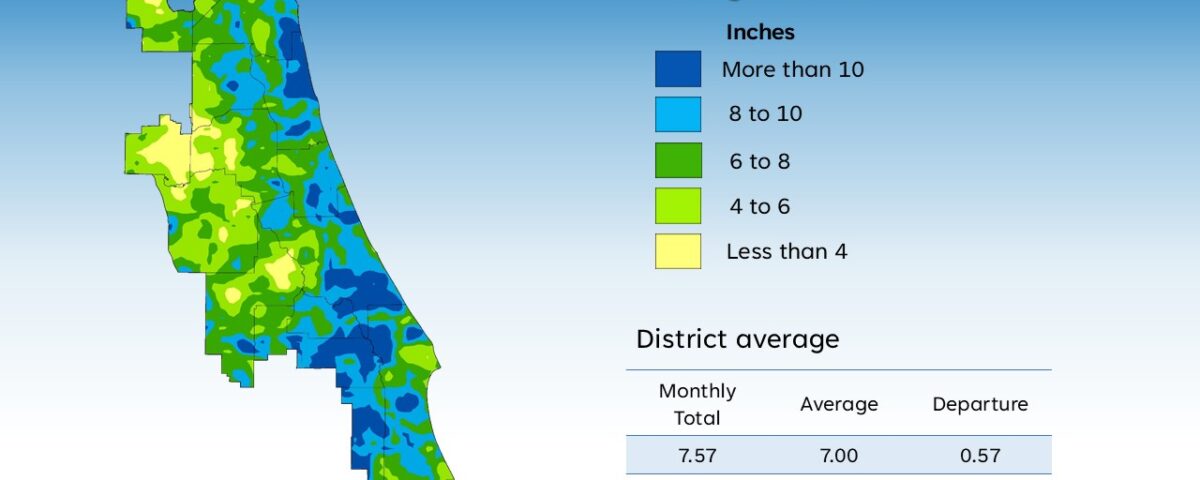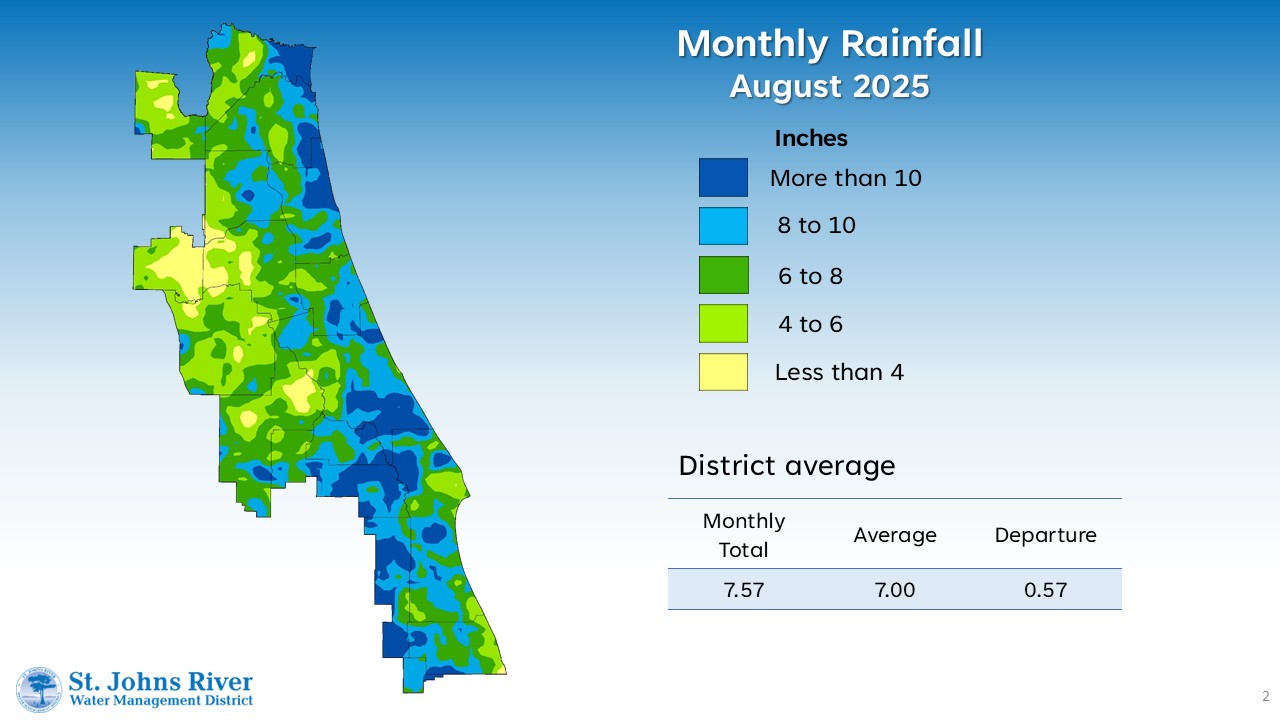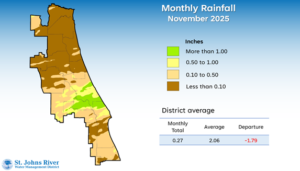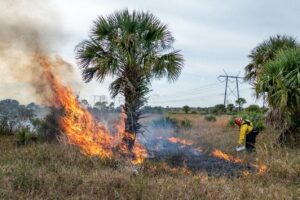August rainfall varied across District, averaging slighting above normal

A map illustrates rainfall conditions in August across the St. Johns River Water Management District.


Rainfall across the District in August varied, largely due to typical seasonal thunderstorms. Northern coastal counties, the I-4 corridor and parts of the southern counties received the most, with some locations recording more than 13 inches. In contrast, several northwest counties received below-average rainfall. Overall, the District recorded an average of 7.57 inches for the month, slightly above the long-term August average of 7 inches.
A full report outlining August’s hydrologic conditions was presented at the District’s Governing Board meeting. Highlights include:
Rainfall
- Totals ranged from 10.90 inches in Osceola County to 5.16 inches in Alachua County.
- Annual rainfall across the District was 52.95 inches, 1.94 inches above the long-term average.
- Central counties continue to receive the most rainfall throughout the year, while areas along the southern coast and western portions of the District have received less.
- Nine counties have recorded above normal annual rainfall, with five counties more than 5 inches above their annual average, including Seminole and Volusia counties which are more than 11 inches above average. Nine counties are below their 12-month average, with Alachua, Baker and Bradford counties more than 7 inches below normal.
Groundwater
- Water levels across the Upper Floridan Aquifer primarily increased in August, with a larger portion of the area now in the normal range.
- Districtwide groundwater levels, expressed as a single index, were in the 44th percentile, which is in the normal range for this time of year.
Spring flows
- Silver Springs recorded a monthly mean flow of 554 cubic feet per second (cfs), or 358 million gallons per day (mgd), an increase of 27 cfs from July. This is in the top of the low range for this time of year.
- In Volusia County, the Blue Spring station reported a decrease of 10 cfs in August with a monthly mean flow of 159 cfs (103 mgd).
- Rock Springs had a monthly mean flow of 59 cfs (38 mgd), which is in the normal range.
- Wekiwa Springs recorded a monthly mean flow of 64 cfs (41 mgd) continuing to be in the normal range.
For further insights into rainfall totals and other hydrologic data, visit www.sjrwmd.com.
Visit WaterLessFlorida.com for tips to help landscapes thrive while saving water and money.





